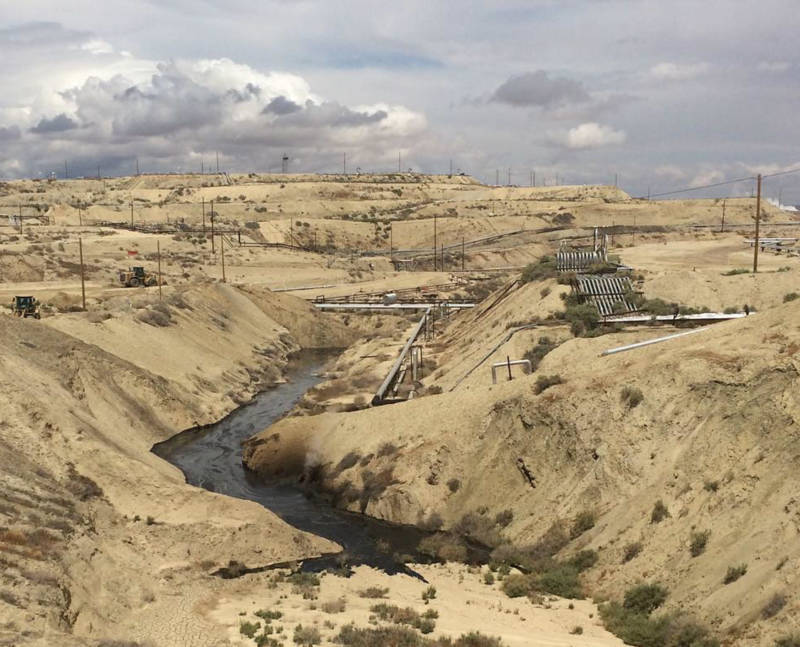A Chevron executive told state officials earlier this month that a well at the center of the spill was damaged.
"There are multiple damage spots in the well," Adam Young, a company engineer, wrote in en email to DOGGR officials. It's unclear if the damage was sustained before or during the spill.
California's underground injection regulations require operators like Chevron to prevent "surface expressions." In addition to issuing a notice of violation in the incident, DOGGR ordered the company to stop oil extraction work within a 600-foot radius of the spill.
The agency says Chevron stopped steam injection into wells 1,000 feet around the incident to alleviate pressure in the area.
DOGGR's Drysdale said about 20 steam injection wells in the area have been taken offline and nine wells that were idle have returned to operation — also to alleviate pressure.
Chevron has kept government agencies in the loop on the spill and is working with them to investigate it, according to company spokeswoman Veronica Flores-Paniagua.
"Fluid from the seep is contained. There has been no impact to waterways and wildlife," Flores-Paniagua said in an email.
Small surface expressions are common in oil fields, according to state officials. Drysdale said the current incident is unusual because three separate vents have allowed fluid to come to the surface.
Hollin Kretzmann, an Oakland-based attorney for the Center for Biological Diversity, said the incident illustrates the hazards that go along with crude oil extraction.
"It underscores the danger of this industry," Kretzmann said. "Whether it's pipelines, whether it's wells, whether it's refineries, every stage of the process has some sort of risk. Unfortunately in this case, it's resulted in a large-scale disastrous accident."
Kretzmann said Chevron's spill has the potential of hurting local wildlife and future drinking water supplies.
State officials say no one has been injured, there's no risk to the public and no water that's used for drinking or farming is affected by the spill.
"The incident is not near any aquifers that would be suitable for beneficial use," said W. Dale Harvey, an engineer with the Central Valley Regional Water Quality Control Board.
Glenn Fankhauser, Kern County's agricultural commissioner, said the nearest farm is 6 miles north of the oil field.

